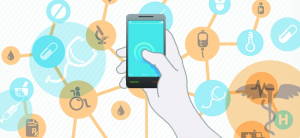A professor and doctoral student in the chemical and biomolecular engineering department at the UH Cullen College of Engineering have won the National Science Foundation’s Innovation Corps (I-Corps) award. The UH I-Corps team will use the $50,000 award to develop highly sensitive rapid medical diagnostic tests that use “glow-in-the-dark” nanoparticles to signal the presence of a disease target.
“Translational work is what they call it. To turn basic research into technologies and products with an actual benefit to society,” said Balakrishnan Raja, a chemical engineering Ph.D. student who is serving as the Entrepreneurial Lead on the I-Corps grant. Richard Willson, Huffington-Woestemeyer Professor of chemical and biomolecular engineering, is the grant’s Principal Investigator. Raja and Willson have recruited Tim McGrath, who has over 20 years of experience as an executive in the biotech industry and has served as President or CEO of three life sciences companies, as the I-Corps business mentor.
The NSF I-Corps program aims to prepare scientists and engineers to extend their focus beyond the laboratory and bring select, NSF-funded projects to the commercial market. Willson, an expert on improving medical diagnostic tools and technologies, has had several NSF-funded research projects that many of his graduate students participate in.
Raja, who will be completing his doctoral degree in a few short weeks, has been conducting research alongside Willson throughout his career as a Ph.D. student. During this time, Willson’s lab group developed the core of the technology that won them the I-CORP award.
Their idea involves the use of nanophosphors, or light-emitting nanoparticles, to replace the traditional colored nanoparticles found in most rapid diagnostic tests, such as over-the-counter pregnancy tests or rapid HIV tests.
“One of the issues with colored nanoparticles is you have to look by eye, and sometimes the results can be very faint,” Raja explained. “This format of rapid diagnostic test is used for a variety of diseases right now, but it has several limitations.”
In addition to the subjectivity of having to squint to detect faintly colored lines, Raja added that current tests are not sensitive enough to detect low levels of diagnostic targets for several diseases and can’t provide any quantitative information.
Using these phosphorescent nanoparticles and a light-based readout will allow for much more sensitive, quantitative and reliable test results. Moreover, Raja said an inexpensive smartphone attachment, designed like a phone case, could be manufactured that would allow the test results to be read with the phone’s built-in camera and flash.
“A user would have to add the sample, such as a fingerprick quantity of blood, to a disposable test cartridge containing our nanoparticles, and then insert it into the smartphone attachment after 15 minutes. The flash from the camera will excite the luminescent particles, and the camera will capture the light emitted by them,” Raja said. A smartphone app will be developed to analyze the picture captured by the camera and provide an immediate, quantitative readout of the results.
While Willson and Raja are currently exploring many different disease targets for their rapid diagnostic test, one of their initial interests is developing a rapid test for chlamydia, the most commonly reported sexually transmitted disease in the U.S., according to the Centers for Disease Control and Prevention (CDC). If left untreated, chlamydia can lead to cervical cancer, infertility and many other complications.
Current chlamydia tests are expensive and slow, thereby increasing the chances that patients won’t return to the clinic to collect their test results, Raja said. “There are no rapid tests for chlamydia that are highly sensitive and inexpensive. It’s a huge need.”
Raja and Willson are also exploring rapid tests for dengue fever, flu and strep throat. Their vision, Raja said, is to one day sell a variety of these rapid diagnostic tests over-the-counter at very affordable prices.
“The idea is to one day be able to sell these at drug stores, so you can buy an attachment for your smartphone and test yourself for common diseases,” said Raja.
The group’s idea will be put to the test during the intensive 6-month I-Corps program, which requires them to attend entrepreneurship workshops, engage with future customers and competitors, and ultimately develop a fully-functioning prototype of their proposed diagnostic system.
“The program is designed to make scientists go out into the real world and really test their hypotheses out by talking to customers rather than just sit inside of a laboratory and dream up things,” Raja said. “I think it’s a really great thing, to get academics out into the community, testing their ideas, interacting with people.”
And the timing of the rigorous entrepreneurial I-Corps training couldn’t have been better for Raja and a small group of Willson’s Ph.D. students; long before the opportunity to apply for the NSF I-Corps program arose, Raja said that he and two other students working in Willson’s lab were planning to commercialize their glowing diagnostic tests. “The I-Corps award will be a huge boost to these efforts,” he said.
Andrew Paterson (a co-inventor of the nanophosphor technology) and Gavin Garvey, both Ph.D. students at UH, along with Gabe Hodges, a physician specializing in internal medicine and pediatrics, have been working with Raja for over six months on their startup company, Luminostics, which is dedicated to bringing these rapid diagnostic tests into hospitals and clinics as quickly as possible. Willson will continue to serve as an advisor to Luminostics even after Raja’s academic career comes to a close.
“Dr. Willson has been very supportive of us in doing this. It’s not typical of Ph.D. advisors to let their students just pursue these commercial interests,” Raja said. “I truly appreciate that. It’s really cool.”
